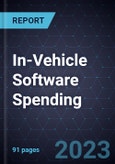Industry Convergence between Consumer Electronics, IT, and Automotive Players to Create Major Value Add for Nearly Half of All Vehicle Software in Use
Original equipment manufacturers (OEMs) used to differentiate their products based on mechanical features. Today, however, consumers increasingly want features defined by software, such as driver assistance, connectivity, and comfort-convenience services. The convergence of technology areas including electrification, autonomous driving, shared mobility, and connectivity is causing OEMs to migrate from the traditional hardpoint-defined architecture to a software-oriented architecture. These trends are reshaping customer expectations and forcing OEMs to address them in new-generation vehicles, thereby turning vehicles into software on wheels.
Similar to the mobile phone industry, the automotive industry is experiencing a sort of rebirth. Increasingly, industry participants are spending more R&D budget on software development and turning themselves into software companies. OEMs will deploy different strategies to develop proprietary software based on their capabilities, some developed in-house and others co-developed with partners.
This study includes research, analysis, forecasts, and an overview of industry spending on in-vehicle software development. It aims to provide an overview of trends impacting software development and a discussion on the impact these trends have on the growth, deployment, and R&D strategies of different OEMs, suppliers, and industry stakeholders.
Table of Contents
Companies Mentioned (Partial List)
A selection of companies mentioned in this report includes, but is not limited to:
- Aptiv PLC
- BlackBerry Ltd.
- BMW Group
- Bosch
- Continental AG
- DENSO Corporation
- EB
- Ford Motor Company
- GM
- Green Hills Software
- Honda Motor Co., Ltd.
- Hyundai Mobis
- Hyundai Motor Group
- Magna International
- Mercedes-Benz Group
- Red Hat Inc.
- RNM Alliance
- Stellantis
- Toyota Motor Corp.
- Volvo Cars
- VW Group
- Wind River Systems
- ZF Friedrichshafen AG








